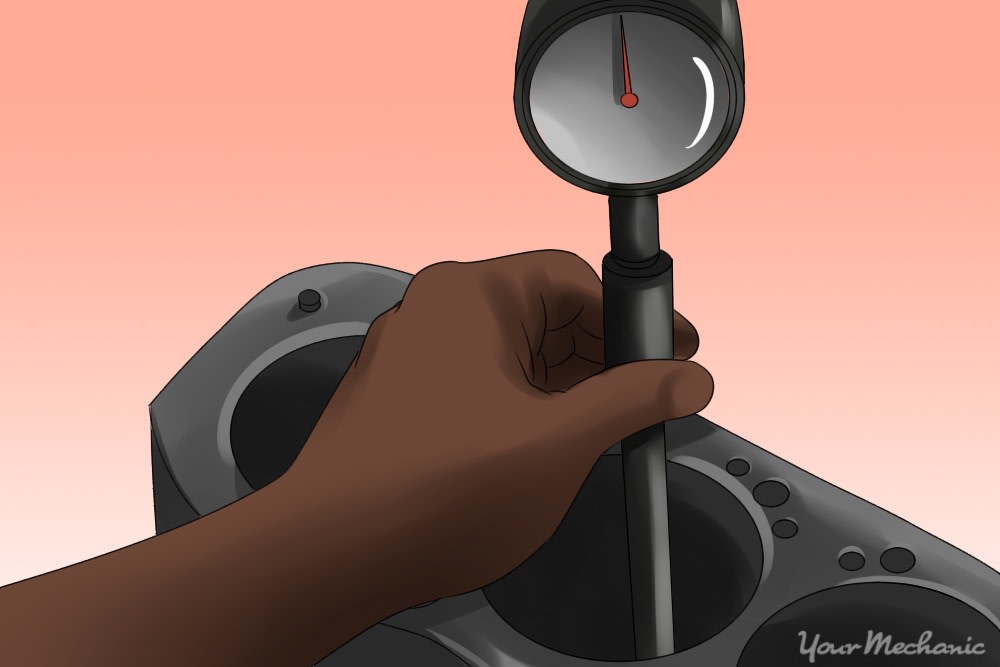

While today’s combustion engines are built stronger than ever, eventually components inside can and will wear out. As most car owners know, an engine makes power by compressing vaporized fuel inside the combustion chamber. This creates a certain amount of compression (in pounds per cubic inch). When vital parts including piston rings or cylinder head components wear out over time, the compression required to efficiently burn fuel and air is reduced. If this happens, it’s important to understand how to perform a compression test because it’s the first step to correctly diagnosing and repairing the engine.
In the information below, we’ll outline what a compression test is, some of the common reasons you might want to have this service completed, and how it is performed by a professional mechanic.
What is a Compression Test?
A compression test is designed to reveal the condition of your engine’s valve-train and piston rings. Specifically, parts like intake and exhaust valves, valve seats, head gaskets, and the piston rings are common parts that can wear out and lead to reduced compression. While each engine and manufacturer are unique and have different levels of recommended compression psi, generally speaking, a compression over 100-psi, with less than a 10-percent variation between the lowest and highest reading is considered acceptable.
A compression test involves the use of a compression gauge, which is installed inside of the spark plug hole of each individual cylinder. As the engine is cranked over, the gauge will display the amount of compression being generated inside each cylinder.
When Would You Need a Compression Test?
Under normal circumstances, a compression test is recommended when your car experiences the following symptoms:
- You notice smoke blowing from your exhaust system when you accelerate or decelerate.
- Your car does not accelerate as normal or appears sluggish.
- You notice a vibration coming from your engine while driving down the road.
- Fuel economy is worse than normal.
- You are adding oil more often than normal.
- Your car’s engine is running hot.
How is a Compression Test Completed?
If you are thinking about completing a compression test, there are 5 important, general steps to follow to ensure it’s as accurate as possible. Always refer to the recommended instructions for each compression tester you use to ensure accuracy.
Warm up your engine to operating temperature. Piston rings, valve seats, and other critical components are designed to expand as they heat, which creates the desired compression ratio inside the engine. If you complete a compression test on a cold engine, the reading will be inaccurate.
Completely shut off the engine. To complete a compression test, the engine needs to be shut off. You should also remove the fuel pump relay switch and the electrical connection to the coil pack. This disables the ignition system and fuel delivery system, which ensures the engine does not ignite during the test.
Disconnect spark plug wires. Make sure to disconnect them from all plugs then remove all spark plugs.
Install your engine compression gauge into the first spark plug hole. You’ll want to test compression on an individual cylinder basis. It’s best to start with the cylinder closest to you and move towards the back, then follow on the other side (if applicable) until you’ve completed each compression test.
Crank the engine for short periods. Ask someone to help you by having them crank the engine over with the key several times over a period of 3 to 5 seconds. This should allow the maximum compression reading to appear on the gauge. Record this maximum number on a piece of paper per each cylinder and complete this step on each proceeding cylinder.
Once you’ve completed all the cylinders on your engine, you’ll want to review the numbers. You can refer to a service manual for your vehicle year, make, and model to determine what the numbers should look like. As we stated above, the generally accepted number is above 100-psi. The important item to consider is the difference between each cylinder. If one is more than 10 percent less than others, a compression problem likely exists.
A compression test is always a good way to determine if the symptoms you’re experiencing are related to internal engine damage. However, if compression is found to be low inside the engine, significant repairs or in some cases, complete engine replacement will be required. The key is to have a professional mechanic perform a compression test so they can review the results and recommend a repair or replacement that makes financial sense.



